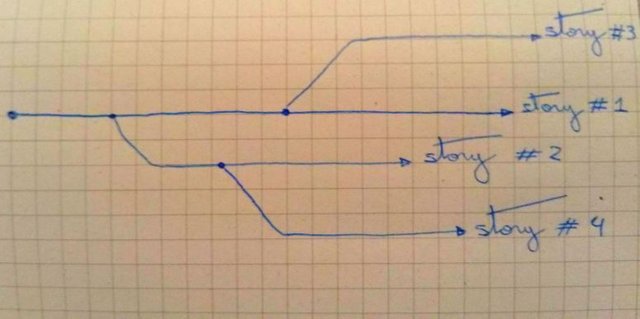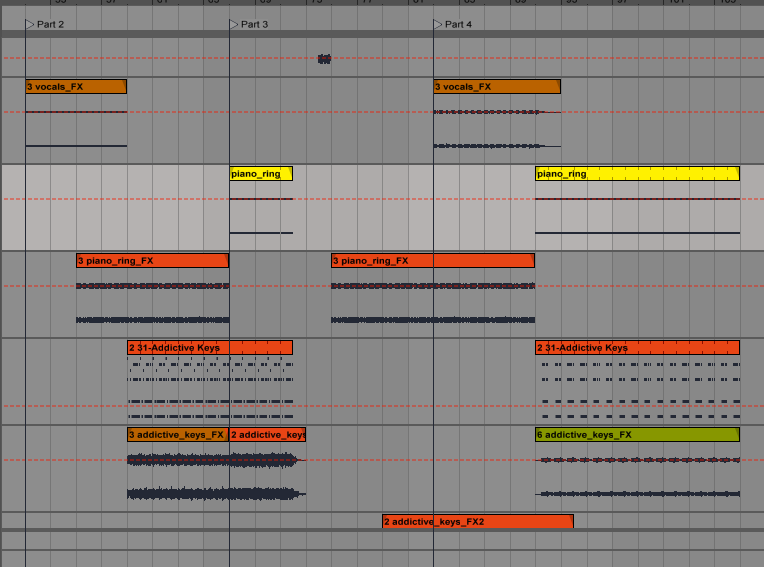Composition tips: Engaging your listeners with open loops
How many times have you stayed through a terrible movie just to know what happens at the end? That is the power of an open loop when it pokes your curiosity. If you are a regular TV series fan, you might have your favorite ones, probably your top five, and you may think they are all great. Here’s the thing: they are not.
OK, maybe they are. At the same time, they all use open loops to hook you up. And by applying the same principles on your music, you can get the same effect on your listener. This is, indeed, an open loop. So far you’ve been following me through these seven lines and I still haven’t told you what an open loop is. I just mentioned it and then continued talking about TV series. Now you’re curious about it, aren’t you?
I first heard of this concept from one of my favorite writers, Neil Strauss. But I discovered it a bit before that, only that I didn’t know it was called an “open loop”. In screenwriting, it works this way: you start telling a story. Once it starts developing, you start telling story #2. When story #2 is getting interesting, you pause again and start telling story #3. At this point, you have three parallel, unfinished stories that your audience wants to know about. That’s what gets them hooked on it. Think about “Lost” and you’ll get the idea.
A real life example
If you are wondering how you can apply this to your music, let me tell you a real life story. Long time ago when I was producing my first track and was not yet confident about it, I asked some people for feedback. Some of them told me that they liked it but that it had too many radical transitions. This really left me thinking since they didn’t sound too radical to me. It was actually the same chord from beginning to end.
What was happening was that the track had four parts, each one with different sounds, and there was no connection between the parts, despite the fact that all of them had the same chords and they all shared the same melodies. To fix this, I extended some sounds from one part into the next one. This way, the overlapping sounds were not only connecting the adjacent parts, they were creating open loops.
Explanation
Let’s say that your track starts with an “intro” that leads to “part one”. The “intro” story has finished and you’re now telling the story called “part one”. At some point, you will start telling the story called “part two”. If you stop “part one” completely in order to begin “part two”, there’s no open loop. Sure, “part two” can be great and people may enjoy it, but if the subsequent “part three” is boring, people will lose interest. On the other hand, if you go back to “part one” right after “part two”, your track becomes predictable.
If you are a verse-chorus-verse kind of producer, that predictability might work well for you. Actually, it’s in the core of mainstream music hits and there’s nothing wrong about it. It does work, as long as you can create something catchy. Nevertheless, I propose you a different approach that can still be applied within a verse-chorus-verse framing.

Image: Open loops in screenwriting. New loops, or stories, are constantly appearing while the previous loops are still open.
Application
When jumping from “part one” to “part two”, extend some elements so they are still being played in “part two” even if they originally belonged to “part one”. If it’s a different key, adapt them to the new one. Play them only for one or two bars and then you can stop them or fade them out. As you approach “part three”, you can take one element from there and bring it backwards to the ending of “part two” so it starts earlier.
The idea is to have new “stories” constantly appearing and being unraveled along your track, regardless of the “official” parts it can be divided into. Ideally, there should always be something new happening in the track every one or two bars, even if it’s just a little detail in a drone piece. That will make people want to listen until the end.
More examples
Sometimes, you don’t want to introduce new elements but just play the same pattern or melody for 8 bars. In that case you can play the melody with different instruments or sounds. Or you can even use the same instrument while slightly and progressively modifying its sound with an effect or filter. Techno tracks are a good example, they can be extremely repetitive but they create suspense with the use of low-pass filters that swipe from low to high frequencies, adding this feeling of a constant movement.
In TV series such as “Lost”, not only new stories are always appearing but they also play another trick: they make some of them disappear for a while, only to bring them back just right when you started forgetting about them. I like to do the same with melodies. Something previously played with a clean melodic guitar can reappear in a totally different wrapping, like a noisy AM-modulated synthesizer. This is the perfect combination: it sounds familiar and it sounds new at the same time.
The right balance
In the end, it’s all about balance. Hooks are important and you want them in your track. On the other hand, play the same repetitive pattern for too long and you’ll get your audience bored. They’ll even get annoyed.
Having different elements or “stories” constantly appearing and evolving along the track makes it more interesting. However, you need to see yourself as a story teller. You are telling a story nobody cares about in the beginning, so you need to grab people’s attention and keep that going until the end, while at the same time you’re delivering a well-rounded story. Creating open loops captures your listeners’ attention, but you still need a nice track they can enjoy listening to.
Written by Miguel Chambergo
This article was originally published in CrackingSound
Follow us on Facebook: Cracking Sound

A downvote was applied to partially counter earlier whale votes as an experiment to reduce whale domination of voting influence. Not intended to express an opinion on the content nor result in a net reduction of rewards or reputation (automated notice)